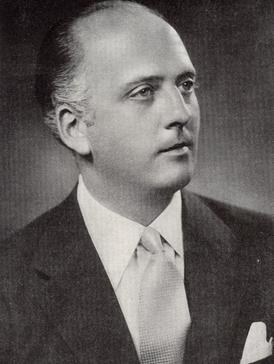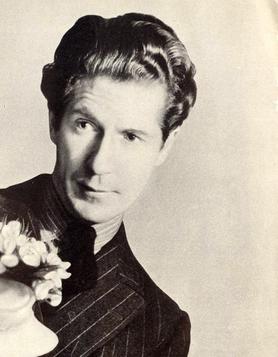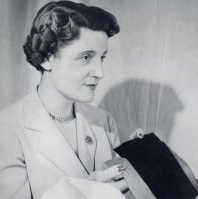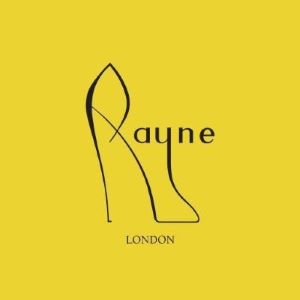
Philip Anthony Treacy is an Irish haute couture milliner, or hat designer, who has been mostly based in London for his career, and who was described by Vogue magazine as "perhaps the greatest living milliner". In 2000, Treacy became the first milliner in eighty years to be invited to exhibit at the Paris haute couture fashion shows. He has won British Accessory Designer of the Year at the British Fashion Awards five times, and has received public honours in both Britain and Ireland. His designs have been displayed at the Victoria and Albert Museum and the Metropolitan Museum of Art.

Hat-making or millinery is the design, manufacture and sale of hats and other headwear. A person engaged in this trade is called a milliner or hatter.

Simone Mirman (1912–2008) was a Paris-born milliner based in London, chiefly known for her designs for the British royal family.

John Cavanagh was an Irish couturier of the 1950s and 1960s. A member of the Incorporated Society of London Fashion Designers (IncSoc), his style has been described as reflecting Parisian chic. He designed the wedding dresses for the Duchess of Kent in 1961 and for Princess Alexandra in 1963.

The Incorporated Society of London Fashion Designers was a membership organisation founded in 1942 to promote the British fashion and textile industry and create luxury couture to sell abroad for the war effort. It aimed to build the relationship between government and fashion industry and represent the interests of London couturiers. The organisation continued after the war and sought to present itself as an alternative to the revived Paris couture industry.

Charles Southey Creed was a British fashion designer. Born into the longstanding tailoring house of Henry Creed & Company in Paris, he launched his eponymous label in London in 1946. The first elected member of the Incorporated Society of London Fashion Designers, he had success in both Britain and the United States.

Giuseppe Mattli (1907–1982), usually known as Mattli or Jo Mattli, was a Swiss-born and London-based fashion designer known for his couture designs and, later, his ready-to-wear clothing and couture patterns.

Angele Delanghe, was a Belgian fashion designer based in London who ran an eponymous label from the late 1930s to the mid 1960s and also produced couture designs for the West End department store Fortnum & Mason.

Michael Donnellan (1915–1985) – best known as Michael of Carlos Place and simply Michael – was an Irish-born fashion designer who headed the house of Lachasse from 1941, before running a successful eponymous couture house in London from 1953 to 1971. From the 1960s on, he combined the role of couturier with consultancy to mainstream fashion houses, most notably acting as a key consultant to Marks & Spencer.
Clive Evans, better known as Clive, was a London-born fashion designer of the 1960s who attracted a number of celebrity fans and was promoted internationally as a high fashion designer from Swinging London.

Aage Thaarup (1906–1987) was a Danish-born milliner who ran a celebrated hatmaking business in London between the 1930s and 1970s.

John Richardson Boyd MBE was a Scottish milliner based in London. Designing hats for over seventy-five years, Boyd was one of London's most respected milliners and is known for his creations for Diana, Princess of Wales and Anne, Princess Royal. Boyd was a milliner to three generations of Diana's family – Diana, her mother Frances Shand Kydd and grandmother Ruth Roche, Baroness Fermoy – and had remained at the centre of his craft adding another generation of royals with Catherine, Duchess of Cambridge. Boyd had one of the longest millinery careers in the world whilst continuing to practise his art before his death in 2018. Boyd’s label continues with his protégé and senior milliner Sarah Marshall.

A cartwheel hat is a hat with a wide-brimmed circular or saucer-shaped design. It may be made in a variety of materials, including straw or felt and usually has a low crown. It may be similar to the picture hat and halo-brimmed hat in shape. Typically, it is worn at an angle to show off the curve of the brim, rather than being worn at the back of the head in the manner of a halo hat.

For the French general and diplomat, see Claude Carra Saint-Cyr

A mushroom hat is a millinery style in which the brim of the hat tilts downwards, resembling the shape of a mushroom. It is a style that first emerged in the 1870s and 1880s, when it was usually made of straw. It became fashionable again from around 1907 to the late 1920s; these versions featured a distinctly downturned brim although the size and shape of the crown varied according to prevailing fashions.

A lampshade hat is a millinery design in which the hat has a small circular crown – typically flat, but sometimes rounded – and flares outwards to create a cone-like profile. In shape, it may have some similarities to the pillbox and bucket hat, both of which were popular at around the same time, although the classic lampshade design is longer and more flared than a pillbox and is generally made of stiffer material than a bucket hat.
Lachasse was a British couture firm operating from 1928 until 2006, making it one of the longest surviving high fashion houses in London.

Sir Edward Rayne was head of H. & M. Rayne, one of the foremost British manufacturers of high-end and couture shoes. With a Royal Warrant to both the Queen and Queen Mother, Rayne shoes were worn by high society and film stars.

Rayne was a British manufacturer known for high-end and couture shoes. Founded in 1899 as a theatrical costumier, it diversified into fashion shoes in the 1920s.
Alison Adburgham was an English journalist, author and social historian, best known for her work as fashion editor of The Guardian newspaper, a position she held for 20 years. Along with Prudence Glynn of The Times and Alison Settle of The Observer, she pioneered British fashion journalism in a broadsheet national newspaper; as a bylined columnist, influencing public perception of trends in clothing, the industry itself. She also wrote several books on social history.

















